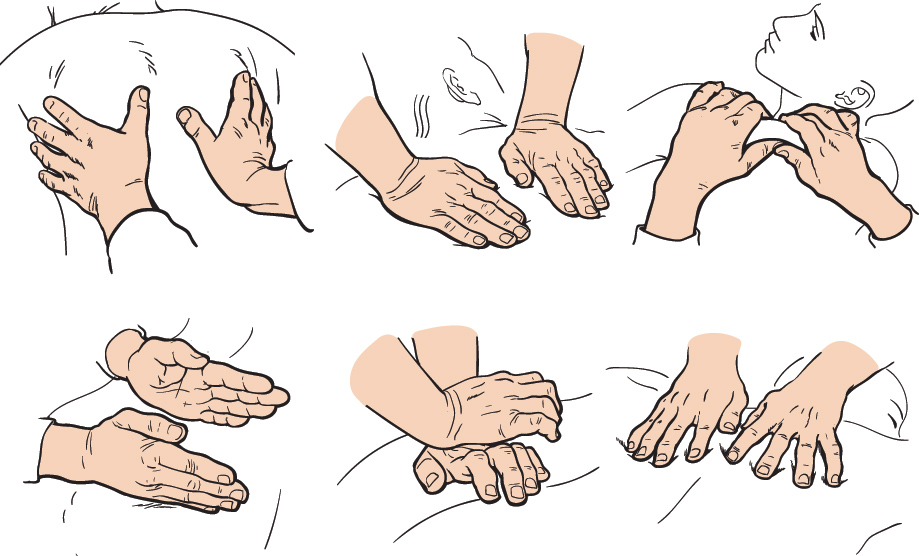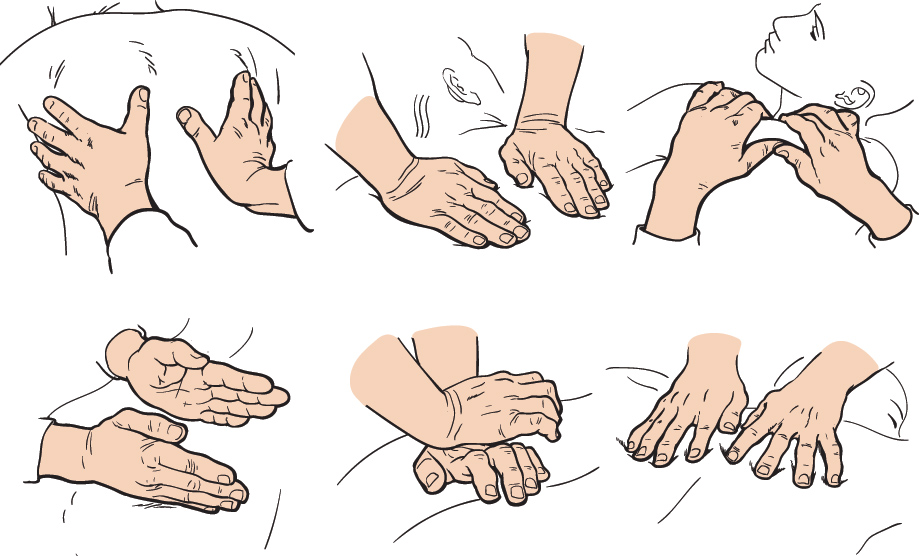You may have heard about sports massage, but did you know that there are actually several different types? Each type of sports massage targets specific areas and is tailored to meet the needs of athletes and individuals at different stages of training or injury recovery. From Deep tissue massage to pre-event and post-event massages, understanding the different types of sports massage can greatly enhance your overall performance and well-being. So, let’s take a closer look at the various techniques and benefits of sports massage.

This image is property of www.newcastlesportsinjury.co.uk.
Swedish Massage
Swedish massage is one of the most popular and widely recognized types of massage therapy. It is designed to relax the entire body by using long, flowing strokes, gentle kneading, and circular movements. The main goal of Swedish massage is to increase blood flow, decrease muscle tension, and promote overall relaxation. During a Swedish massage, the therapist may also incorporate techniques such as tapping, stretching, and joint mobilization to enhance the benefits of the massage. This type of massage is perfect for those who want to unwind and de-stress after a long day.
Benefits of Swedish Massage
Swedish massage offers numerous benefits for both the body and mind. Besides the obvious relaxation and stress relief, it can also improve circulation, reduce muscle soreness and stiffness, increase flexibility, and promote better sleep. The gentle yet effective techniques used in Swedish massage can also help in relieving headaches, anxiety, and even symptoms of depression. Additionally, Swedish massage has been found to boost the immune system, improve digestion, and enhance overall well-being.
Deep Tissue Massage
Deep tissue massage is a therapeutic massage technique that focuses on targeting the deeper layers of muscle and connective tissue. It is often recommended for individuals who suffer from chronic muscle tension, injuries, or postural imbalances. The massage therapist uses slow and deliberate strokes with firm pressure to release chronic tension and knots in the muscles. Through deep tissue massage, the therapist can reach the underlying muscles and fascia to provide relief from pain, restore mobility, and promote healing.
Benefits of Deep Tissue Massage
Deep tissue massage offers a wide range of benefits, including the reduction of chronic pain, increased joint mobility and flexibility, improved posture, and the release of toxins from the body. This type of massage can also help in rehabilitating injured muscles and improving sports performance. By targeting specific muscle groups and areas, deep tissue massage can break up scar tissue and adhesions, allowing for better circulation and oxygen flow to the muscles. It is an excellent choice for individuals who need intense therapeutic work to alleviate chronic pain and tension.
Trigger Point Massage
Trigger point massage, also known as myofascial trigger point therapy, is a specialized technique that targets specific points in the muscles called trigger points. These trigger points are sensitive areas of muscle tissue that can become tight and painful when compressed. During a trigger point massage, the therapist applies direct pressure to these trigger points to release the tension and alleviate the pain. This technique often involves deep pressure and can be uncomfortable at times but can effectively reduce muscle knots and tightness.
Benefits of Trigger Point Massage
Trigger point massage is particularly beneficial for individuals experiencing chronic pain due to muscle tension and tightness. By releasing the trigger points, this type of massage can significantly decrease pain and discomfort. In addition to pain relief, trigger point massage can also enhance flexibility, improve range of motion, and increase blood circulation in the affected areas. It can be a valuable treatment option for those suffering from conditions such as fibromyalgia, tension headaches, and temporomandibular joint disorders (TMJ).
Sports Massage
Sports massage is a specialized form of massage therapy that focuses on the needs of athletes and individuals participating in sports and athletic activities. It is designed to enhance athletic performance, prevent injuries, and aid in the recovery process. Sports massage techniques can vary depending on the athlete’s specific needs, including pre-event, post-event, and maintenance massage.
Pre-Event Massage
Pre-event massage is performed shortly before a sports event or competition. Its purpose is to warm up the muscles, increase blood flow, and prepare the athlete mentally and physically for optimal performance. The massage therapist uses techniques that are invigorating and stimulating, such as quick, rhythmic strokes and percussions. Pre-event massage can help reduce muscle tension, improve flexibility, and enhance the athlete’s focus and readiness.
Post-Event Massage
Post-event massage is done after a sports event or competition to aid in the recovery process. It focuses on reducing muscle soreness and facilitating the removal of metabolic waste products that accumulate during intense physical activity. The massage therapist uses techniques like gentle stretching, long strokes, and kneading movements to promote relaxation and encourage muscle recovery. Post-event massage can help alleviate post-exercise muscle soreness, reduce inflammation, and speed up the healing process.
Maintenance Massage
Maintenance massage is a regular, ongoing treatment that athletes incorporate into their training routine. It aims to prevent injuries, maintain muscle flexibility and range of motion, and optimize athletic performance. The massage therapist works closely with the athlete to address any muscle imbalances, tightness, or areas of concern. Maintenance massage can help athletes stay in peak condition, prevent overuse injuries, and improve their overall performance.

This image is property of www.muscleclinic.co.uk.
Rehabilitative Massage
Rehabilitative massage is a specialized type of massage therapy that focuses on the rehabilitation and recovery of injured muscles, tendons, and soft tissues. It is often recommended as part of a comprehensive treatment plan for individuals recovering from sports injuries, surgeries, or other musculoskeletal conditions. Rehabilitative massage techniques vary depending on the specific injury or condition, and the therapist works closely with the client’s healthcare team to ensure a targeted approach.
Rehabilitative massage aims to alleviate pain, reduce inflammation, restore normal range of motion, and promote healing. The therapist may use a combination of techniques such as deep tissue massage, trigger point therapy, stretching, and joint mobilization to address the unique needs of the client. By targeting the injured area and surrounding tissues, rehabilitative massage can expedite the recovery process and help individuals regain function and mobility.
Soft Tissue Release
Soft tissue release is a manual therapy technique that focuses on releasing tension and tightness in the soft tissues of the body, such as muscles, tendons, and fascia. Also known as STR, this technique involves the application of pressure and stretching to specific areas to restore mobility, reduce pain, and promote healing. Soft tissue release can be used in combination with other massage techniques or as a standalone treatment.
During a soft tissue release session, the therapist locates the areas of tension and applies direct pressure while guiding the client through specific movements. This combination of pressure and movement helps release adhesions and improve circulation in the affected area. Soft tissue release is highly effective in relieving muscle tightness and stiffness, alleviating chronic pain, and improving overall mobility.

This image is property of classpass.com.
Myofascial Release
Myofascial release is a technique that targets the fascia, a connective tissue that surrounds and supports the muscles throughout the body. The fascia can become tight and restricted due to injury, inflammation, or poor posture, leading to muscle pain and limited range of motion. Myofascial release aims to release these restrictions by applying sustained pressure and gentle stretching to the fascia.
During a myofascial release session, the therapist uses their hands or specialized tools to apply pressure along the fascial lines, allowing the tissues to elongate and release tension. This technique can provide relief from chronic pain, improve flexibility and posture, and enhance overall physical performance. Myofascial release is often used in conjunction with other massage techniques to address specific areas of tension or dysfunction.
In conclusion, the different types of sports massage offer a wide range of benefits for athletes, individuals participating in physical activities, and those seeking therapeutic treatment. Whether you need to relax and unwind or address specific muscle imbalances and injuries, there is a massage technique suited for your needs. From the gentle strokes of Swedish massage to the focused pressure of trigger point therapy, each type of massage provides unique benefits to enhance your well-being and optimize your physical performance. Consult with a qualified massage therapist to determine which type of sports massage is most suitable for you and experience the healing power of touch.
